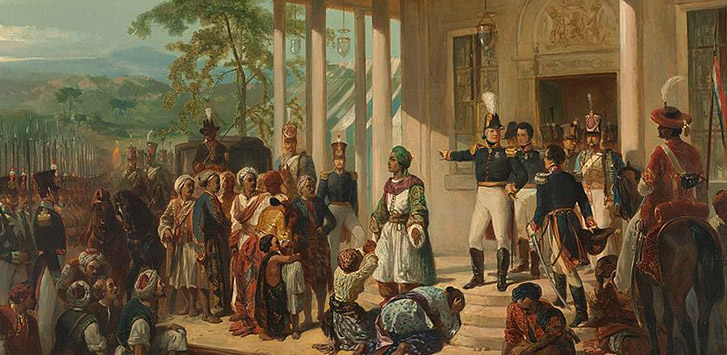
Sumatran coffee, you either hate it or love it. With distinct earthy tones, full-body, and low acidity, Sumatran coffee is a unique experience to be enjoyed. The wet-hulling process it undergoes, unlike coffee beans from other countries, accentuates and mutes different aspects of the Sumatran beans and their subsequent cup of coffee.

Sumatra is a small island that is a part of Indonesia in Southeast Asia. Its climate is perfect for growing Arabica coffee, providing the world with some of the finest, premium, fair trade coffees in the world.
Coffee History in Sumatra & Indonesia

Coffee was first brought to Indonesia in 1699 by Dutch colonialists traveling from Ethiopia, one of the few places where coffee grows naturally. Coffee production began to really pick up in 1884 near Lake Toba, the largest volcanic lake in the world.
Soon after, Indonesia became the largest coffee-producing nation in the world, exporting mostly from the town of Jakarta located on the Indonesian island of Java, which is how Java coffee became so popular and well-known. Sumatra was one of the first places to grow and produce coffee on a large scale.
Coffee Production in Sumatra
Sumatra’s coffee production is defined by its humid climate that has the perfect ratio of rainfall to sunshine and by the wet-hulling process that it uses to prepare the beans.
Growing Conditions
Sumatra has three main growing regions: Mandheling, Lintong, and Gayo. It boasts the perfect climate for Arabica coffee with well-balanced soil, due to nearby volcanoes, and its location near the equator that influences the prevalence of sunshine and rainfall. Sumatra’s climate allows for a longer harvest time than most from May through September, but the quality of coffee beans it produces through the year remains about the same, differing from other continents whose beans start to lose flavor as the harvest season peters out.
Small Farmers

90% of the coffee beans are grown by smallholders on small farms in high altitudes, which adds to the flavor profile of Sumatra blends. Women are mainly responsible for the bulk of the planting, growing, harvesting, and transporting of coffee beans.
Coffee Processing
While some farms in Sumatra use traditional natural processing or wet processing methods, most farms use a process called wet-hulling. Wet-hulling produces a much different flavor profile than the other types of processing because it’s both faster and keeps the bean moist longer than other types.
Step 1. Right after the coffee cherries are picked, their skins are removed with homemade machines.
Step 2. The beans are left in woven bags to ferment overnight.
Step 3. The next morning, farmers wash off the remaining mucilage (fruit) on the coffee cherry and let them partially dry on a piece of parchment in the sun.
Step 4. The beans are shipped to a warehouse where they’re removed from the parchment and allowed to continue drying.
Step 5. The beans are shipped to a port city for exportation and dried for the third time.
This style of processing fits Sumatra’s climate better than other styles since farmers only have around four hours of drying time a day in such a humid climate.
Starbucks Partnership
Starbucks has made Sumatra coffee well-known, as it’s a major purchaser of Sumatran beans, both regular and aged. Aged Sumatran beans have a more spicy note than others. Starbucks dark roasts its Sumatran beans to use as a base for its espresso.
This has helped cultivate the myth that Sumatra is a darker blend than most, which is untrue. It can be roasted however you want. A dark roast simply highlights many of the favorite characteristics of Sumatran coffee, such as its low acidity and full-body.
Flavor Profile
The Sumatran coffee flavor profile is defined by wet-hulling. Its weird flavors that are a combination of earthy, spicy, wild, and “mushroomy” notes are balanced with a full-body and low acidity. While many of these nuanced flavors are muted by wet-hulling, the body and mouthfeel are enhanced.
Often, roasters choose to dark roast Sumatran coffee because it counteracts the variance created by wet-hulling, adding richness to the beans. Sumatran coffee is a dark and brooding cup that attracts many of the traditional coffee drinkers who have been buying specialty coffee for years.
Here are some examples of favorite Sumatran green coffee beans:
- The Sulawesi Toraja is a sweet, clean Sumatran coffee that undergoes wash-processing, unlike the majority of other Sumatran beans. It boasts a soft and syrupy body.
- The Sumatra Mandheling has complex, intense flavors with a chocolatey sweetness and notes of licorice balanced by a full-body and light acidity. Mandheling is considered to be the best Sumatran coffee.
- Sumatra Gayo offers a dense, intense flavor, in contrast to the typical other blends of Sumatran coffee.
Brewing Notes
Sumatran coffee is naturally less acidic than many other coffees, due to wet-hulling. This means that many of the brewing methods that you would usually choose to lessen the acidity, such as the pour-over method, aren’t needed for this.
In the case of Sumatran beans, you should choose the brewing method based off the roast of the coffee. Each roast brings to light different aspects of the coffee. A light roast enhances the herbal complexity and earthy notes. A medium-dark roast accentuates the low acidity and notes of chocolate, leather, and nuts. A dark roast highlights the full-body and sweetness with earthy and chocolatey flavors.
Conclusion
If you’re interested in Sumatran coffee and the different flavors it presents but unsure of what to try, you see all of our options to get the full experience of Sumatran coffees. Wet-hulling produces such different flavors in Sumatran coffee, like the spicy, wild, earthy characteristics, that it is worth trying if you’re wanting to expand your coffee-drinking repertoire.